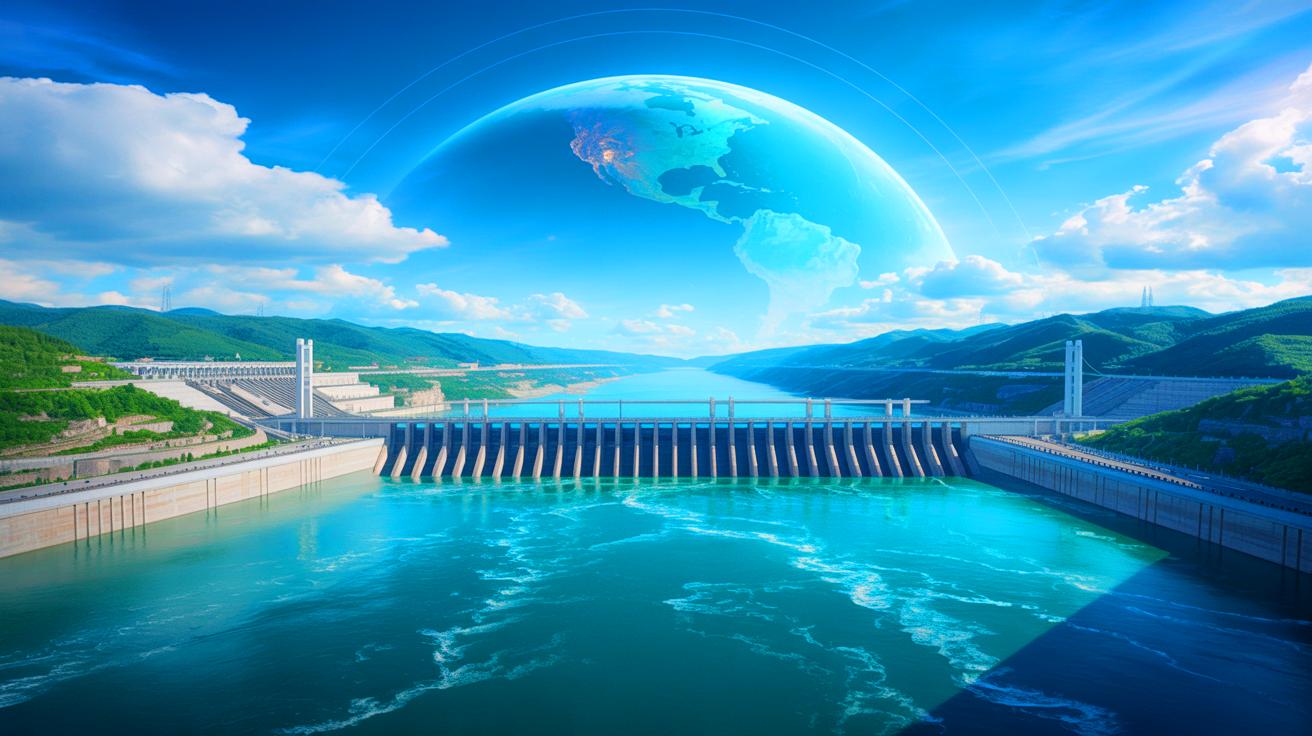- 🌍 The Three Gorges Dam in China, the largest hydroelectric dam in the world, symbolizes China’s engineering prowess.
- 🔍 NASA has indicated that massive infrastructures like this dam might subtly influence Earth’s rotation.
- 💧 The dam’s reservoir, when full, could increase the length of a day by 0.06 microseconds and alter Earth’s shape.
- ⚠️ This highlights the importance of understanding and mitigating the environmental consequences of large-scale projects.
The relentless drive of humanity to push the boundaries of technology and infrastructure has led to monumental achievements around the world. From the awe-inspiring skyscrapers that pierce city skylines to the massive dams that harness the power of water, our ability to transform the environment is unparalleled. However, with these innovations come unforeseen consequences that can ripple far beyond their immediate vicinity. NASA’s insights reveal that even human-made structures can subtly influence Earth’s rotation. This article delves into the profound implications of such changes, focusing on large-scale projects and their unexpected global repercussions.
Colossal Infrastructures and Their Unseen Impact
The world has seen a surge in constructing massive infrastructures that defy conventional engineering norms. Structures like the Burj Khalifa in Dubai, the Shanghai Tower, and the Clock Towers in Saudi Arabia symbolize humanity’s quest for grandeur. Yet, beyond their architectural brilliance, these structures raise significant concerns about their environmental impact. Among these, the Three Gorges Dam in China stands out as the world’s largest hydroelectric dam, exemplifying China’s engineering ambitions and resource management strategies.
While the dam’s primary function is to generate electricity, its implications extend beyond energy production. The sheer size and mass of the dam have sparked discussions about its potential impact on Earth’s rotation. This concern, explored by scientists and researchers, emphasizes the need to reassess our construction approaches. The possibility that engineering feats could influence the planet prompts a reevaluation of how we balance development with environmental stewardship.
The Three Gorges Dam: A Giant with Global Consequences
China, as the leading producer of hydroelectric power globally, underscores its commitment through the Three Gorges Dam. Despite meeting only a fraction of the nation’s energy needs, its importance goes beyond power generation. A NASA report from 2005 suggested that the dam might affect Earth’s rotation, a phenomenon that occurs with significant mass shifts, such as earthquakes or reservoir fillings.
Dr. Benjamin Fong Chao from NASA’s Goddard Space Flight Center explains that even minor human actions can impact the planet’s dynamics. The Three Gorges Dam, with its vast water reservoir, exemplifies how human activities may inadvertently alter Earth’s natural processes. This insight highlights the interconnectedness of human endeavors and natural phenomena, urging us to reconsider the broader implications of our engineering projects.
The 0.06 Microsecond Effect
Understanding the dam’s potential impact requires a closer look at Earth’s rotation dynamics. Similar to an ice skater adjusting their spin by repositioning their arms, the 2004 earthquake shortened the day by 2.68 microseconds. If the Three Gorges Dam reservoir reaches full capacity, it could hold around 10.6 trillion gallons of water. This massive water displacement could increase the length of a day by 0.06 microseconds and alter Earth’s shape slightly.
These changes, though seemingly negligible, highlight the delicate balance of Earth’s systems. The cumulative effect of numerous such activities could significantly impact Earth’s rotation, climate, and stability. As we continue to exploit natural resources, understanding these nuances becomes increasingly critical. The subtle yet profound influence of large-scale projects on Earth’s rhythms underscores the need for thoughtful consideration in future developments.
Looking Toward the Future
The impact of human constructions on Earth is a growing concern. As we continue building larger and heavier structures, it’s essential to understand the potential consequences. How will these changes affect our daily lives and environment in the long term? Structures like the Three Gorges Dam remind us of humanity’s profound influence on Earth. Ultimately, we must question whether we are ready to accept the responsibilities that accompany technological advancements.
As we advance, the pressing question remains: how can we balance our pursuit of progress with the need to maintain the planet’s stability? This ongoing discussion will shape the future of engineering and environmental responsibility. How do you envision achieving a balance between advancement and sustainability in the coming decades?
This article is based on verified sources and supported by editorial technologies.
